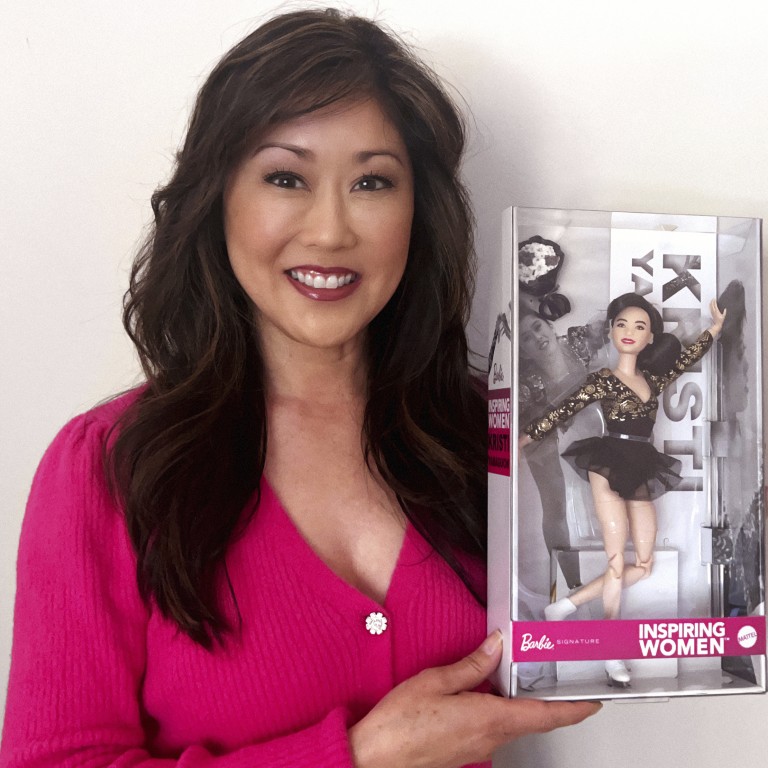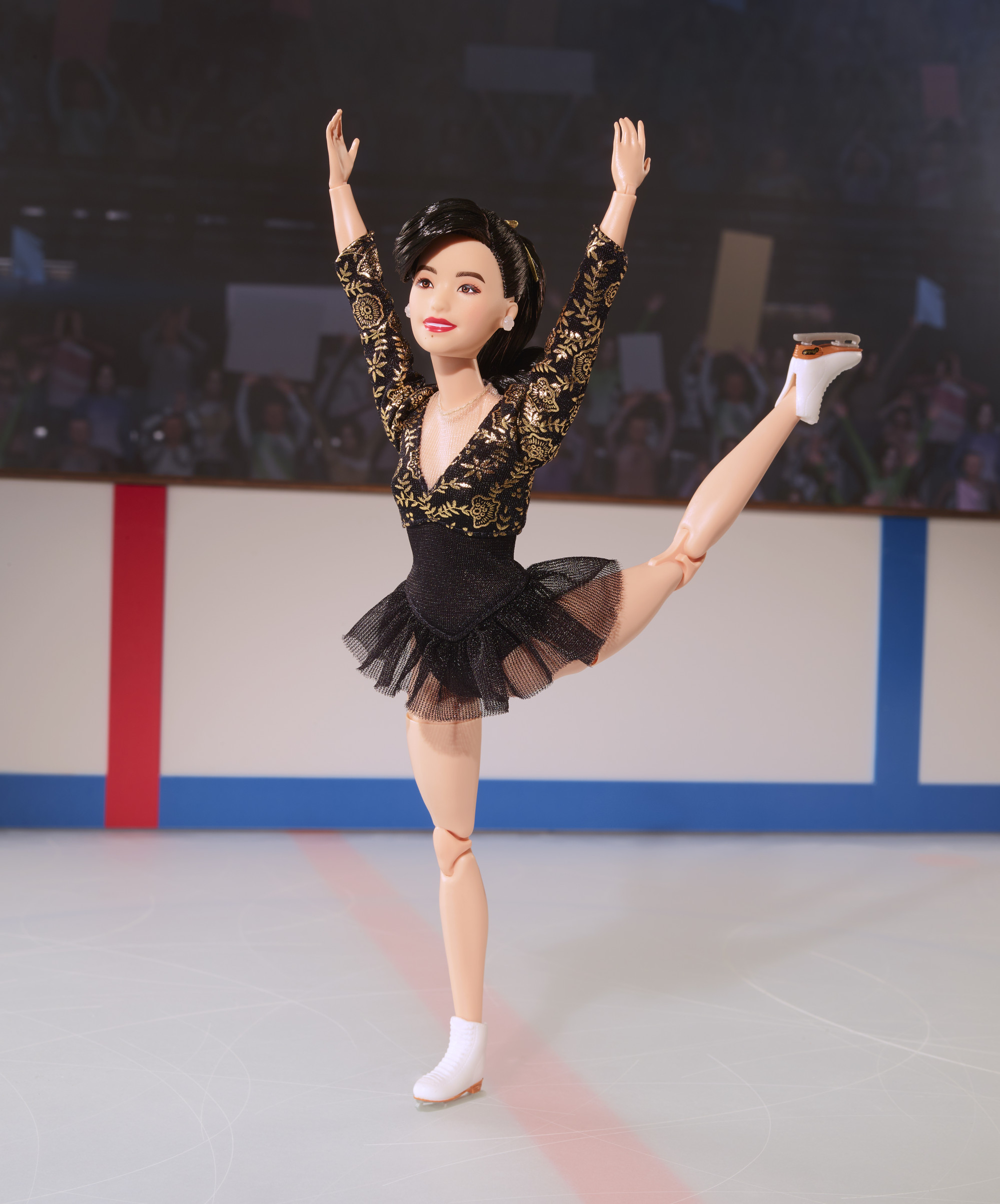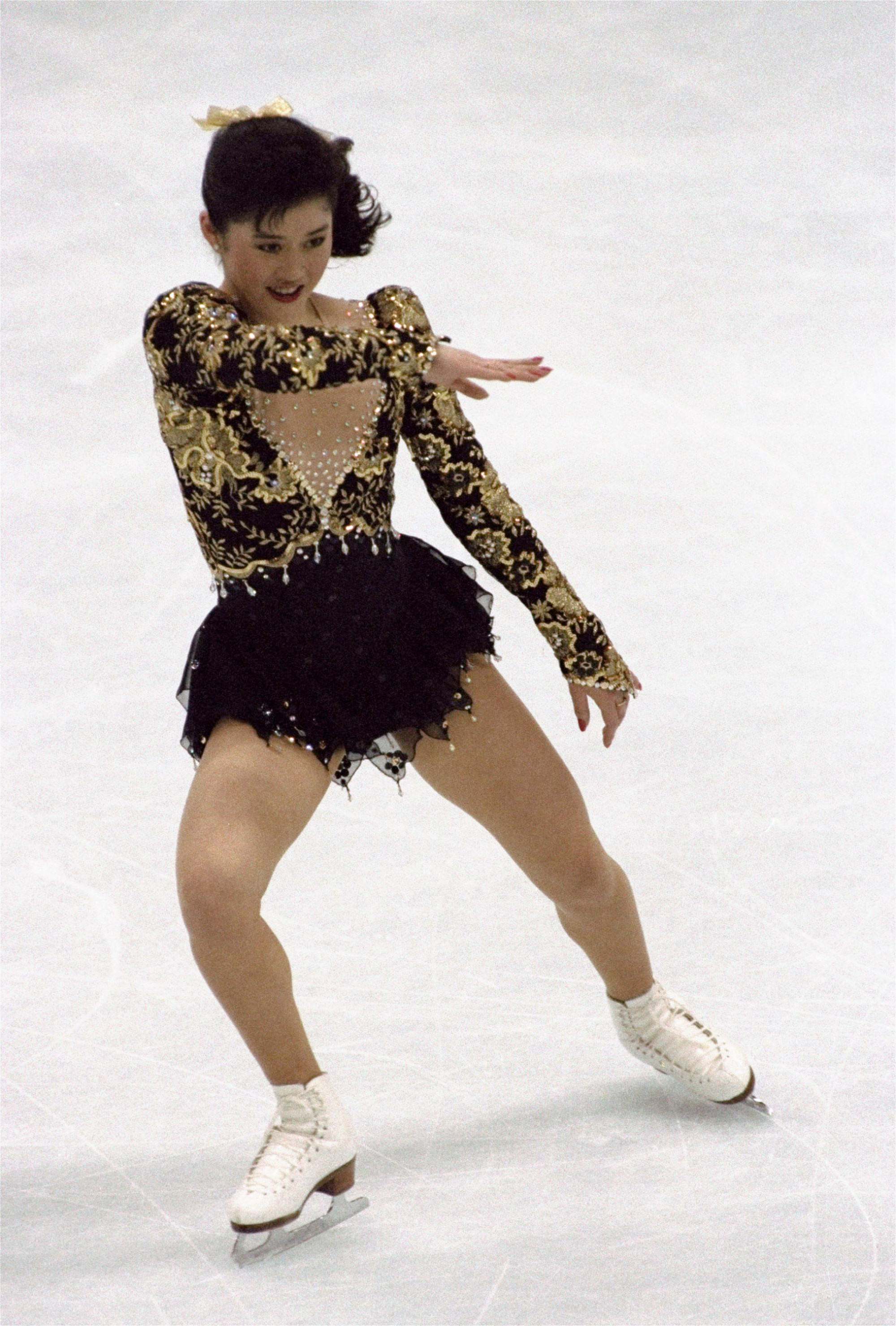
Kristi Yamaguchi, first Asian-American to win individual figure skating Olympic gold, ‘tickled pink’ to become a Barbie
- The then 20-year old became the first Asian-American to win an individual figure skating gold medal, at the 1992 Winter Olympics
- Yamaguchi says she and outfit designer Lauren Sheehan are ‘just so tickled pink’, while she is also happy with the doll’s visage
Like many little girls, a young Kristi Yamaguchi loved playing with Barbie. With a schedule packed with ice skating practices, her Barbie dolls became her “best friends”.
So, it’s surreal for the decorated Olympian figure skater to now be a Barbie girl herself.
“It’s a huge, huge honour. I think a lot of pride comes along with it, not just recognising the Olympic achievement, but also being recognised during AAPI (Asian-American and Pacific Islander) Month and following in the footsteps of some incredible women that I idolise: Anna May Wong, Maya Angelou and Rosa Parks,” Yamaguchi told Associated Press. “It’s hard to see me put in the category with them.”
Yamaguchi, who became the first Asian-American to win an individual figure skating gold medal, at the 1992 Winter Olympics, has been immortalised as a doll for Barbie’s “Inspiring Women” series, Mattel announced on Wednesday.

The release is timed for AAPI Heritage Month, in May.
This is not Yamaguchi’s first doll depiction, though. In the 1990s, touring show Stars on Ice put out a line of dolls modelled after notable skaters.
The Barbie version is a lot more detailed.
Mattel duplicated everything the then 20-year-old medallist wore at the Olympics in Albertville, France: the sparkling black-and-gold brocade outfit designed by Lauren Sheehan, the gold hair ribbon and even a red-and-white bouquet like the one Yamaguchi held atop the podium.
Yamaguchi said both she and Sheehan are “just so tickled pink”.
She also is happy with the doll’s visage.
“It looks like me, for sure. You know, the eyes and just the shape of the face. And then, of course, the hair, for sure. I mean, it has the bangs that are the ’90s,” Yamaguchi said, chuckling.
She appreciates that the doll’s release comes on the high heels of the blockbuster Barbie movie last year. Her daughters, ages 18 and 20, are fans of the Oscar-nominated film. Their initial reaction to their mother being a Barbie? Disbelief.

“When they found out I was getting a doll, they were kind of flabbergasted and being like, ‘What? Like Mom, like how do you qualify? But that’s way too cool for you’,” Yamaguchi said.
When Yamaguchi became a household name in the ’90s, most Asian-American children were growing up feeling like toys-aren’t-us kids. If you were an Asian parent looking for an Asian doll in the United States, you probably turned to independent mail-order companies or waited until you were visiting your country of heritage.
Since then, the toy market has evolved somewhat, with big companies such as Mattel diversifying and independent entrepreneurs filling the void.
Two Asian doll lines – Jilly Bing and Joeydolls – launched within the past year, one by an Asian American mother and the other by an Asian Canadian mother. Both could not find dolls that looked like their daughters.
Sapna Cheryan, a professor of psychology at the University of Washington who served a year on Mattel’s Barbie Global Advisory Council in 2018, said Asian-Americans have long dealt with two stereotypes: the model-minority whizz kid or the perpetual foreigner. Toys can help dispel those myths, and instead signal acceptance and inclusivity.
Dolls modelled after real people can get people talking about their human counterparts. Cheryan applauded Barbie’s choice of Yamaguchi.
“There are so many Asian-American athletes but they’re just not propped up in a way that athletes of other racial groups are,” said Cheryan, who researches cultural stereotypes and their impact on race and gender disparities. “Having a match in terms of racial identification or gender or both,” she said, is important in creating effective role models for kids.

Mattel has mostly garnered praise for its diversity efforts but it’s had some missteps along the way. In 2021, the toymaker said it “fell short” by failing to include an Asian doll in a line of Tokyo Olympics-themed Barbies. In January, there was some backlash to Asian “You Can Be Anything” Barbies that seemed stereotypical. One was a violinist and the other a doctor in panda scrubs.
Tying Yamaguchi to Barbie, a symbol of American pop culture, is especially remarkable considering what she and her family have dealt with as Japanese Americans. She has spoken about how her maternal and paternal grandparents were forced into US incarceration camps in response to Japan’s 1941 attack on Pearl Harbour.
When she captured the gold more than 50 years later, media coverage partially focused on why she did not seem to have many endorsement deals. In an AP article from 1992, a sports advertising executive blamed her Japanese heritage, citing an economic climate that was anti-Japan. “It’s wrong, wrong, wrong, but that is the way it is,” the executive said.
So while Barbie may seem like just a toy, it’s so much more for Yamaguchi.
“When kids see themselves or see someone who inspires them, then it just opens up their world and their imagination to what’s possible,” she said.

